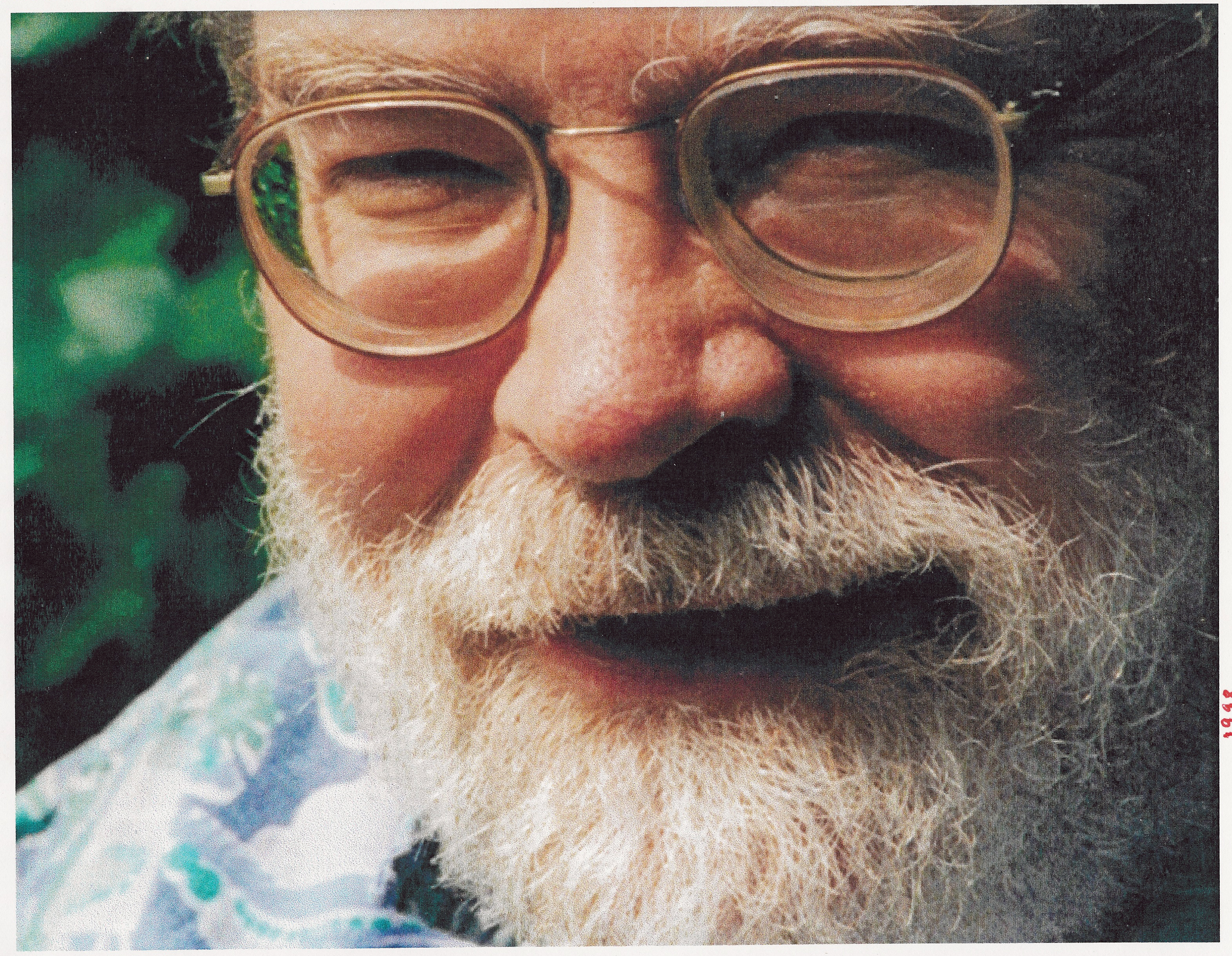
Speakers
Shun-ichi Amari
Teikyo University. Advanced Comprehensive Research Organization
 |
Title:Wasserstein Statistics |
Abstract:Probability plays a fundamental role in information sciences. There are two important geometrical structures introduced in the manifold of a statistical model, that is a parametric family of probability distributions. One is information geometry based on the invariance principle of Chentsov, requesting that the geometry depends only on the sufficient statistics. The other is Wasserstein geometry related to the transportation problem. Roughly speaking, information geometry gives a distance or divergence measure between two probability distributions p(x) and q(x) based on their vertical difference, whereas Wasserstein uses their horizontal difference. Modern statistics has so far been constructed based on the likelihood principle. Information geometry gives a unified framework for statistical inference, proving the superiority the maximal likelihood estimator. Wasserstein geometry concerns with deformations and transformations of probability distributions and is useful for vision analysis and others. We study Wasserstein statistical inference based on the Wasserstein geometry. The Wasserstein estimator is the one that minimizes the Wasserstein distance from an observed empirical distribution to the model distribution. We apply the results by Zhou and Li, establishing a unified framework between the two geometries. We use the affine deformation statistical model (sometimes called the location-scatter model), aiming at separating the effects of the waveform of a probability distribution and its location and affine transformation. The Wasserstein estimator is consistent but not Fisher efficient in general (it is Fisher efficient only for the Gaussian case). The Wasserstein estimator is proved to be the moment estimation in the case of the affine deformation model. It is Wasserstein-efficient, implying that it is robust against waveform changes due to observation noises, whereas the maximum likelihood estimator is not. Our theory gives a characterization of the Wasserstein estimator, giving a starting point for the study of Wasserstein statistics. |
Leon Glass
Department of Physiology, McGill University
 |
Title:Using Mathematics to Diagnose, Cure, and Predict Cardiac Arrhythmias |
Abstract:Advances in basic science often lead to new technologies. In this talk I will discuss efforts to translate insights about cardiac dynamics derived from experiments and nonlinear dynamical mathematical models to cardiology. I will focus on three different clinical problems: diagnosing arrhythmias using wearable devices, curing arrhythmias, and predicting the risk and time of onset of fatal arrhythmias. Despite the successes I will mention in my talk, we still do not have a good understanding of how to decode the complex rhythms that hearts continuously generate. Tackling this problem is a potential direction for the Moonshot Project. |
Celso Grebogi
Institute for Complex Systems and Mathematical Biology King’s College, University of Aberdeen
 |
Title:TIPPING POINT IMPACTED BY MULTIPLEXITY IN MUTUALISTIC ECOLOGICAL NETWORKS |
Abstract:From a dynamical point of view, a tipping point presents perhaps the single most significant threat to an ecological system as it can lead to abrupt species extinction on a massive scale. Climate changes leading to parameter drifts can drive various ecological systems towards a tipping point. Uncovering natural and biological mechanisms to mitigate or delay a tipping point is of considerable interest. Focusing on the tipping-point dynamics in ecological mutualistic networks of pollinators and plants constructed from empirical data, I will examine the phenomena of noise-induced collapse and noise-induced recovery aiming at understanding the interplay between transients and stochasticity in high dimensional ecological networks. I will discuss control strategies that delay the extinction and advance the recovery by controlling the decay rate of pollinators, having implications to managing high-dimensional ecological systems. I will unveil a natural mechanism by which the occurrence of tipping points can be impacted by multiplexity that broadly describes the diversity of the species abundances, the complexity of the interspecific relationships, and the topology of linkages in ecological networks. For a double-layer system of pollinators and plants, coupling between the network layers occurs when there is dispersal of pollinator species. Multiplexity emerges as the dispersing species establish their presence in the destination layer and have a simultaneous presence in both. The new mutualistic links induced by the dispersing species with the residence species have fundamental benefits to the well-being of the ecosystem in delaying the tipping point and facilitating species recovery.
----------- |
Shigenobu Kanba
Kyushu University
 |
Title:Multifactorial Nature of Psychiatric Disorders |
Abstract:Everyone agrees that there is no doubt that mental disorders are multifactorial, polygenic syndromes. It is old report but very important study (Clair D, Lancet 1990) of a large Scottish family spanning four generations, with dominant inheritance of a translocation occurring on the chromosome 11. A variety of psychiatric disorders have been recognized, including recurrent depression, generalized anxiety, schizophrenia spectrum disorders, and so forth. Another example is the 22q deletion syndrome (DiGeorge syndrome). In this syndrome, more than 40 genes are deleted, and patients develop abnormalities in multiple organs. The phenotype of psychiatric disorders also varies with development. In childhood, these include ADHD, ASD, and anxiety disorders, and in adulthood mood disorders and schizophrenia. The interplay between genes and the environment is often encapsulated in the phrase "genes load the gun, and the environment pulls the trigger." Today, the technology to study the pathophysiology of mental disorders has advanced dramatically, spanning genomes, proteins, cells, and neural circuits. The obtained data will be used to comprehensively elucidate pathological conditions by connecting multiple layers of molecules, cells, circuits, and mental and behavioral symptoms by making full use of novel integrated analysis techniques in mutual translation between clinical and basic research. However, future research on mental disorders must also turn its focus to the environment. Environmental factors include those involved in gene expression at the molecular level, such as cytokines, oxidative stress, trophic factors, and the cellular environment in the brain other than neurons, such as glial cells. Natural environments, including viral infections and starvation, are recognized risk factors for schizophrenia. Equally important is psychological environment. A quantum leap in data science facilitates the integration of biological information into psychosocial indexes, unveiling the true picture of psychiatric disorders. |
Jürgen Kurths
Potsdam Institute for Climate Impact Research
 |
Title:Forcing of teleconnections among tipping elements in the climate system |
Abstract:Tipping elements are components of the Earth system that may shift abruptly and irreversibly from one state to another at specific thresholds. An important aspect is how different tipping points are interrelated and how the corresponding teleconnections are changing due to external forcing. Here, we propose a climate network approach to analyse the global impacts of a prominent tipping element, the Amazon Rainforest Area (ARA). We find that the ARA exhibits strong correlations with regions such as the Tibetan Plateau (TP) and the West Antarctic ice sheet. Models show that the teleconnection propagation path between the ARA and the TP is rather robust under climate change. We further uncover that various climate extremes are synchronized between the ARA and the TP. Then we analyze how different ENSO regimes influence this specific teleconnection and find that there is indeed a substantial dependence on the ENSO state. Hence, this interaction of ARA and TP can only be understood as a non-autonomous system. The implications of this basic feature will be discussed in detail. |
Kohei Miyazono
Department of Applied Pathology, Graduate School of Medicine, The University of Tokyo; and Laboratory for Cancer Invasion and Metastasis, RIKEN Center for Integrative Medical Sciences, RIKEN
 |
Title:TGF-β family signaling in cancer invasion and metastasis |
Abstract:Members of the transforming growth factor (TGF)-β family play important roles in cancer invasion and metastasis. We have recently studied the roles of bone morphogenetic proteins (BMPs), members of the TGF-β family, on the growth and differentiation of the glioblastoma-initiating cells (GICs). Through RNA-sequencing analysis of GICs treated or not with BMP-4, we have found that expression of herpes virus entry mediator (HVEM, also known as tumor necrosis factor receptor superfamily member 14 or TNFRSF14) is suppressed by BMP-4 in certain glioblastoma cells. Glioblastoma is subclassified into several subtypes. We have found that HVEM is highly expressed in the mesenchymal subtype of human glioblastoma cells and tissues. Silencing of HVEM expression resulted in reduced proliferation and neurosphere formation of glioblastoma cells in cell culture and decreased tumorigenic ability and prolonged survival of mice after intracranial injection of the glioblastoma cells. We have generated anti-human HVEM-VHH (variable domain of heavy chain of heavy chain antibody). Our recent studies on the functions of HVEM on GICs, including pre-clinical studies, will be discussed. Tissue clearing technology is a new technique that enables comprehensive analysis of the process of cancer progression and metastasis as well as visualization of blood and lymphatic vessels in adult mice. We applied "clear, unobstructed brain/body imaging cocktails and computational analysis (CUBIC)" based cancer analysis to various mouse models and analyzed the progression of cancer metastasis at spatio-temporal single cell resolution Our experimental approach to analyze these data by topological data analysis and non-homogeneous Poisson process model will also be shown. |
Klaus-R. Müller
Technische Universität Berlin
 |
Title:Machine Learning and AI for the Sciences: toward understanding |
Abstract:In recent years, machine learning (ML) and artificial intelligence (AI) methods have begun to play a more and more enabling role in the sciences and in industry. In particular, the advent of large and/or complex data corpora has given rise to new technological challenges and possibilities. In his talk, Müller will touch upon the topic of ML applications in the sciences, in particular in chemistry and physics. He will also discuss possibilities for extracting information from machine learning models to further our understanding by explaining nonlinear ML models. Finally, Müller will briefly discuss perspectives and limitations. |
Henk Nijmeijer
Eindhoven University of Technology
 |
Title:Synchronization of multiple oscillators, the role of coupling and geometry |
Abstract:Synchronization of oscillators may appear in various ways, of which full synchronization of coupled identically oscillators is best known and dates back to the earliest work of Christiaan Huygens in the 17th century. However, also other types of synchronization have been observed, for example, anti-phase synchronization for two coupled oscillators, or wave-like synchronization of multiple oscillators has also been reported, but even other types of coordination are possible. The objective of this presentation is to seek underlying principles to understand the possible synchronization mechanisms. Both some analysis tools as well as experimental results will be discussed. |
James A. Yorke
University of Maryland
 |
Title:What is the graph of a dynamical system? |
Abstract:Frequently we describe a dynamical system in terms of its attractors, but that can leave out important information about unstable invariant sets. A directed graph of a dynamical system is a picture that outlines how the various invariant sets of a dynamical system are related. The simplest example is of the logistic map. Its graph can be extremely complicated. There are dynamical systems with infinitely many attractors, and we want to know how these are dynamically related. |